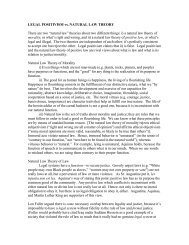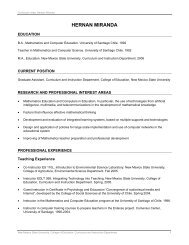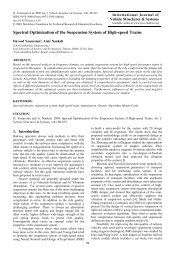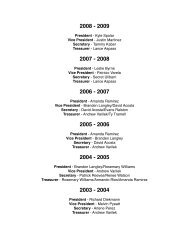Social Comparison and Body Image: Attractiveness Comparisons to ...
Social Comparison and Body Image: Attractiveness Comparisons to ...
Social Comparison and Body Image: Attractiveness Comparisons to ...
Create successful ePaper yourself
Turn your PDF publications into a flip-book with our unique Google optimized e-Paper software.
<strong>Social</strong> <strong>Comparison</strong> <strong>and</strong> <strong>Body</strong> <strong>Image</strong> 661<br />
CONCLUSIONS<br />
Overall, this research verifies that adolescent girls <strong>and</strong> boys engage in<br />
social comparisons <strong>to</strong> peers <strong>and</strong> models across an array of attractiveness<br />
attributes. Furthermore, the message from this study is clear: regardless of<br />
BMI, comparisons <strong>to</strong> peers <strong>and</strong> models/celebrities are connected <strong>to</strong> more<br />
negative body image for both girls <strong>and</strong> boys. The greater frequency of social<br />
comparison among the girls <strong>and</strong> the greater percentage of variance in their<br />
body dissatisfaction scores attributed <strong>to</strong> social comparison suggest that girls<br />
are embedded in a more negative process whether they look <strong>to</strong> the media<br />
images or <strong>to</strong> the peers in their daily lives. These findings mean that interventions<br />
<strong>to</strong> assist adolescents in negotiating body image evaluations need <strong>to</strong><br />
address not only the media representations of body image, but also the values<br />
<strong>and</strong> expectations embedded in the world of peers <strong>and</strong> how this information<br />
is integrated in<strong>to</strong> self-evaluations by adolescents.<br />
There are limitations in this research that future research should address.<br />
Although this research establishes a relationship between self-reported<br />
social comparison <strong>and</strong> body dissatisfaction, the causal direction of this<br />
relationship cannot be determined in this study. It may be that higher rates<br />
of social comparison contribute <strong>to</strong> heightened body dissatisfaction by highlighting<br />
discrepancies between self <strong>and</strong> other. The bidirectional nature of<br />
the correlational data makes it equally plausible that body dissatisfaction<br />
contributes <strong>to</strong> more frequent social comparison. Longitudinal studies <strong>and</strong><br />
experimental research are necessary <strong>to</strong> determine more clearly the causal<br />
connections between social comparison <strong>and</strong> body dissatisfaction.<br />
This research is based primarily on White, middle-class students. Although<br />
it is within this population that body dissatisfaction <strong>and</strong> eating disorders<br />
have been most prominent, there is increasing recognition of the<br />
prevalence of body image issues among adolescents from diverse backgrounds<br />
(Erkut, Szalacha, Garcia Coll, & Alarcon, 2000). Furthermore,<br />
adolescents from different backgrounds may rely on different attributes<br />
<strong>to</strong> define attractiveness (Milkie, 1999). Future research should explore the<br />
definitions of attractiveness, the nature of appearance-related social comparisons,<br />
<strong>and</strong> their relationships <strong>to</strong> body satisfaction for adolescents from<br />
diverse backgrounds.<br />
Finally, the multiple regression analyses explained a substantially<br />
greater portion of the variance in body dissatisfaction for the girls than the<br />
boys. Future research needs <strong>to</strong> identify <strong>and</strong> evaluate the dimensions that enhance<br />
our underst<strong>and</strong>ing of the contribu<strong>to</strong>rs <strong>to</strong> body dissatisfaction among<br />
boys. With this knowledge, we would be better able <strong>to</strong> underst<strong>and</strong> <strong>and</strong> intervene<br />
<strong>to</strong> support all adolescents in the fundamental developmental task<br />
of defining <strong>and</strong> accepting the physical self.












